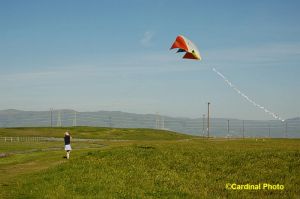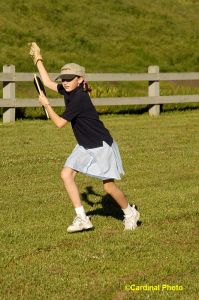DigitalPro Shooter Volume 3, Issue 3, March 18, 2005
Nikon D2X: Two Cameras in One
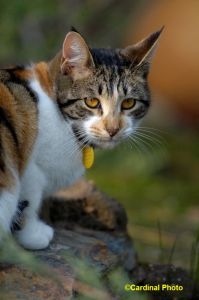 |
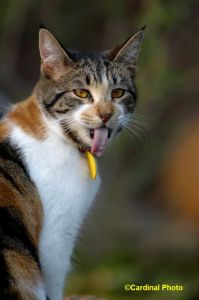 |
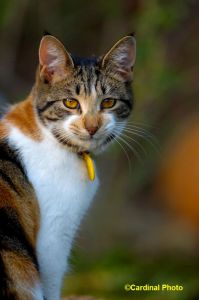 |
Whether you need high resolution portraits or to capture action the D2X can help. Nikon D2X camera JPEGs converted for web. |
||
The first thing I noticed is that the D2X looks & feels pretty much like my D2H. Frankly, I really enjoy using Nikon D-SLRs. I like the way the controls are laid out and the way the cameras handle. I was pleased that the D2X would be no exception. As I went to customize my settings the new menu system was a real treat. It is more logically organized than previous versions and packs lots of cute little tricks to make it easier to set common functionsóincluding a recent settings menu that allows you to go back and re-do or un-do recent changes.
Want to capture this scene? |
And seconds later get this closeup? |
I needed to get both for a job I was shooting, and with the High-Speed Crop feature of the Nikon D2X I did |
|
What I found was that Iíd really purchased 2 cameras in 1. When used in its normal full-resolution mode the D2X is suitable for the most demanding architectural and landscape applications. Used either in the full resolution or high-speed crop mode it makes a great wildlife and sports camera. The ability to quickly shift to 8 frames per second and a tighter 6.8 mega-pixel crop with the twist of a dial is like having a 1-click Teleconverter always with you. Sure, I know it is really just pixel magic and I could crop the same way in Photoshop, but this way I get the faster frame rate and donít have to waste time with a large image workflow when I donít need it. I'd prefer the feature was a little easier to get to, as the "function" button in the lower front of the camera is a little hard to reach while you turn the command dial, but it's still a piece of cake compared to adding a teleconverter.
What about the images?
The first time I used the phrase ďdripping with detailĒ about a digital image was when I used a Canon 1DS. But the camera was too slow and too expensive for my needs. Now Nikon has packaged even more detail in a camera which is twice as fast and half the price. Thatís progress! In short, I really like the images. The color is more natural than with any D-SLR Iíve ever used and the detail is more stunning. Is all that detail truly essential to get my job done. Usually not. But for when Iím creating large prints it certainly adds an extra dimension to the viewing experience.
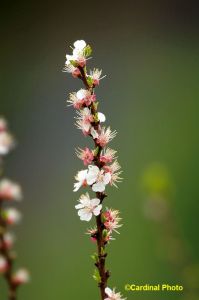 |
 |
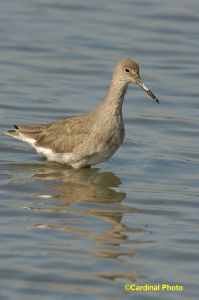 |
Whether in crop mode or full-resolution mode the D2X can capture great images. These images were taken with the HSC (high-speed crop) mode turned on. |
||
Iím not sure how to quantify it in numbers or even show it to you online, but the combination of resolution and color produce the best quality digital images Iíve ever taken and certainly some of the best Iíve ever seen.
Lower noise = more light: The D2X has lower noise than any previous D-SLR. That means you may be able to shoot at a higher ISO than you're used to. Combined with the HSC mode which gives you an effective Teleconverter without any light loss and you may have up to 2 stops of light you can use to increase depth of field or to stop motion.
Workflow with the D2X
The D2X supports both JPEG+RAW mode and provides large previews in the Raw files so image management applications like DigitalPro3 can quickly display even the large Raw files. However the files are large. Uncompressed NEF files are nearly 20MB. Compressed NEFs, using a similar approach to that in the D70 and D2H range from 11MB to 14MB depending on the subject. Crop mode files are of course proportionally smaller. Unfortunately your true Raw processing options are limited at this point. Adobe has not yet released a version of Camera Raw for the D2X so Nikon Capture is the obvious choice. On Windows, however, Capture 4.2 has a memory problem which slows it down and makes it almost unusable unless you have at least a Gigabyte of memory so look for an update from Nikon. [Note: Bibble 4.2 with D2X support has also just been released].
GPS Returns
Nikon has added GPS support to the D2X, which is a welcome change for those of us who got hooked on it with the D1X and D1H. Unfortunately it requires a $99 custom cable, the Nikon MC-35, which runs from your 10-pin connector to the serial end of your GPS cable. The result is expensive and requires two cables, but at least GPS is back. Hopefully someone will take the time to build some custom cables that connect directly with common GPS units.
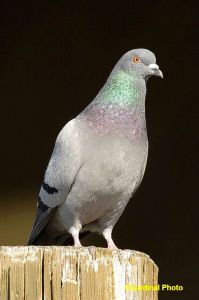 |
 |
 |
Even "everyday" birds like the Rock Pigeon or Gold-crowned Sparrow can look good when photographed with a D2X |
||
Other Features
For those looking for the best image right out of the camera Nikon has split the old ColorMode setting into two. One, now more properly called ColorSpace, chooses whether the camera JPEGs will be rendered into Adobe RGB (larger gamut, suitable for post-processing) or sRGB (will match consumer montiors natively but has a smaller overall gamut). The other, still called ColorMode has settins forfor Portrait (I), Neutral/Default (II) and Landscape (III) (think Velvia. This mode most closely corresponds to choosing a specific film for a traditional 35mm camera.
Image Overlay & Multiple Exposure: For those determined to do their image tricks in the camera the D2X offers two clever approaches. The more traditional of the two--multiple exposure--lets you take from 2 to 10 images which become a single output image. A more novel design--Image Overlay--lets you add together more than one existing Raw image to create a composite. One really nice aspect of doing an overlay this way is that the processing happens on the Raw data, so it can be simply added together rather than the traditional approach of layering in Photoshop which occurs after the data has been processed. Of course you don't have any capability to mask one image or the other using this command, but you can control the gain for each of the images separately.
Interval shooting: The D2X features a built-in interval capability, always handy when trying to record an ongoing activity of which you are part or an unfolding event. This isn't a substitute for shooting tethered and using the interval capability in Capture for really long sessions, but it is handy to have for working in the field. Highlights and histograms are now RGB. You can see either the overall image or just one of the R, G, or B channels. This is particularly useful when you are working to adjust your lighting or have colored light sources. There are also an ever increasing number of options for on camera viewing and marking of images, but frankly I don't tend to use most of them beyond a review of the image along with highlights and histograms.
ďD2Ē family features
For those of you who havenít used a D2H yet, the D2X has some other nice upgrades over the D1 family. Faster Auto-Focus with a flexible set of 11 sensors and group AF modes, a re-designed menu system, image orientation tagging for vertical images and support for Nikonís spiffy new CLS (Creative Lighting System) multiple flash control.
Should you buy one?
Of course only you can decide that. I think if you do youíll really like the camera and love the images, but it is a lot of money that could buy several lenses or some time to attend workshops and practice your shooting. I will say that if you thought youíd need two different cameras for action & high-resolution photo needs that the D2X can handle both chores admirably.
Full Disclosure: I bought my D2X retail (from Robert's) and don't receive anything from Nikon for writing about their products. So anything you read here is what I have found using the equipment and what I believe.
If you want to see some full resolution images for yourself, we have posted a variety of them below, including both the camera JPEG and the camera Raw images--for your personal use only.
Sample Images:
(for the personal use of DigitalPro Shooter subscribers only)
| Camera JPEG: | Raw Image: | Notes: | |
| Kitten Portrait: | Cat.jpg | Cat.nef | |
| DOF/Detail Test: (small rice bowls) |
DOF_0002.JPG | DOF_0002.nef | 600f/4 at 20', ISO 400 |
| DOF_0004.JPG | DOF_0004.nef | at f8 | |
| DOF_0006.JPG | DOF_0006.nef | at f16 | |
| High ISO | DOF_0008.JPG | DOF_0008.nef | at f22, ISO 3200 |
| Teleconverter | DOF_0010.JPG | DOF_0010.nef | with TC 1.7 |
